Pensacola Christian Segregation Academy
Abeka and Pensacola Christian were not integrated until the 1970s, and have lied about their desegregation story for decades. Their profiteering of segregation gave them the means to start an empire.
“For too long the relativist viewpoint has made history seem meaningless. Now there is a definite choice … The facts of history have been selected, organized, and interpreted in light of Christian absolutes … At last everything falls into place. World history becomes a thrilling story having a definite beginning and moving toward a definite end.”
From the 1979 advertisement for Abeka’s “History of the World”
You may not know the name, but you have heard about them. It may have been their wildly apocryphal history textbooks or their history of blaming victims of sexual assault for their own attacks. Maybe you even heard about that kooky college with an extreme Code of Conduct. No dancing, no PG-13 movies, no shorts ending above the kneecaps, and no movie theatres allowed. Pensacola Christian is more than these headlines that may have caught your eye on Reddit or Twitter; just not in the way they would like to think. It is a massive institution within the United States’ religious conservative convention. In addition to its 7,000 students, it distributes its textbooks and recorded lessons to over 1.25 million homeschooled and private schooled children every year.1 Today Pensacola Christian generates over a quarter of a billion dollars in revenue every year while holding billions in assets.2
It didn’t start this way. In September 1954, Pensacola Christian in Escambia County Florida began its first year with an enrollment of just 35 children. After growing to nearly 3,000 students in under 15 years, their ambition could not be contained to a simple private school. By the early 1970s, they reached above the confines of primary and secondary education and established Pensacola Christian College. Around the same time, they would begin publishing their own textbooks under the name Abeka—a brand ubiquitous amongst homeschoolers and private schools today.
Pensacola Christian and its founders, Arlin and Beka Horton, share quite a few parallels with their more known contemporary: Jerry Falwell and Liberty University. Besides their fundamentalist and evangelical beliefs, both began their ministries in the Civil Rights era, starting their schools and churches with all-white congregations. Both also experienced rapid early growth, becoming Christian corporations with strong influence over their factions within just a couple of decades. Yet the Hortons have historically dodged scrutiny and criticism that Falwell has not. Only recently has a critical eye been given to the inner workings of the Florida education ministry. Pensacola Christian is certainly smaller, but it is still highly influential. Beyond their schools and publishing company they operate a mega church, radio stations, multiple summer camps, and mission boards.
But if the founding year of 1954 felt familiar to you for some reason, it is because that is the same year Brown v. Board of Education was decided. Just over three months after the unanimous decision that the segregation of public schools violated the Constitution, Pensacola Christian would begin its first year of private and segregated education. How has Pensacola Christian avoided the apt label of a segregation academy for so long? There is no accounting of its segregation roots anywhere to be found. Certainly nowhere on its website. Wikipedia’s list of segregation academies does not list them, even though it lists others under similar criteria. If there is a written record, I was yet to come across it. What I have found is that the story told by Pensacola Christian about when and why they integrated their school does not line up and that they were definitively segregated into the 1970s despite what they claim. Beyond that is the story of how when Pensacola Christian is dissatisfied with reality, they have the means and the power to change it through their vast and sprawling empire.
Part 1
After graduating from Bob Jones University, Arlin and Beka Horton moved to Pensacola in 1952 with dreams of starting a Christian School. They would meet at the YMCA to hold prayer with locals in the community who shared the same dream. After two short years of directing summer camps and leading Sunday School programs on TV and around town, Pensacola Christian began its inaugural year in September 1954 with the Hortons at the helm. It was, of course, a whites-only school.
The Hortons do not discuss this part of their origins much. When giving interviews to friendly faculty, careful wording is used and quickly refocused to less incriminating aspects of their founding. When retelling the founding in February of 2022, it’s noted that “Christian schools were growing in the 50s”, but there is no mention as to why that might be. They quickly move on from that statement before it lingers in the air too long for their congregation to think reflectively on it. I have watched three interviews with Arlin all following the same pattern; no word is mentioned that they began as a whites-only school.
However, these are 30-minute interviews conducted by those friendly to Arlin and are employed by Pensacola Christian; we are not going to get anything close to a critical perspective from these interviews. If we are going to get an objective viewpoint of this story, we will need something outside of this format.
In a 2001 multi-page expose, The Pensacola News Journal had Pensacola Christian on the front page of their paper, with a half dozen sub-stories throughout that entire day’s issue reserved for the school. It is an uncritical promotion, with most of the page’s real estate given to showering the school with praise and advertising their school. Here is how the Hortons explain to The Pensacola News Journal the obvious issue that comes with starting a private school amid the Civil Rights movement.
“Another hallmark of the school is its diversity among students. [Pensacola Christian] was integrated in 1969, long before public schools and other private schools. The college has always had a racially and ethnically diverse population. ‘We prayed about it and did what we thought was right’ said Arlin Horton of the initial decision to integrate. Added his wife: ‘God made us all, loves us all, treats all of us alike. We are no different in his eyes. I think if you have that Christian philosophy, it helps you.’”
While not a thorough investigation, the third-party perspective goes a little bit further than we have been able to glean previously. There is a straightforward acknowledgment of their segregationist past at least. However, there is something very odd within this small section. The article’s writer states, “[Pensacola Christian] was integrated in 1969, long before public schools and other private schools.” Is the writer just credulously repeating what the Hortons told them? This is a very blatant falsehood. The Escambia School District began integrating in 1962; it was one of nine Florida counties to have integrated schools that year (albeit Escambia County was the only one with a federal court order to do so). By 1969, multiple District and Supreme Court rulings had been put into effect, and bussing programs were kicking off across the South.3
I am surprised The Pensacola News Journal just reaffirmed this statement as fact when it could have been easily disproven. Regardless of the shoddy journalism, we at least have a year and an alleged motive for desegregating. It also gives us a much clearer picture of how the Hortons want to be perceived. They want to be viewed as an early adopter of integration, and that they did it for no other reason than the Lord told them it was the right thing to do. That the truth needs to be bent ever so slightly to support their claims does not seem to be an obstacle for them.
After poring over old interviews and newspaper records, I was left unsatisfied. Unfortunately throughout the last 70 years, no one saw any reason to question the rise of this now huge ministry. Pensacola Christian has flown under the radar for most Americans; it was not until the post-COVID homeschooling boom that interest in the odd curriculum published by the school took any serious root. Since there was no real accounting of this story for me to find anywhere else, I picked up a copy of their 2016 book Builders of the Dream. Within it describes in great detail the origins of the school and the Hortons. It was written by former Dean of Education for Pensacola Christian College, Dr. Phyllis Rand, who was picked personally to write this puff piece.4
Near 100 pages in, we finally get to chapter 7, Taking A Stand, where we are given the story of how Arlin led the school in a “historic decision”. I want to include the full section the book has about the desegregation of Pensacola Christian. For the first fifteen years of this school’s existence, it had been closed to black students and faculty, yet the book can only muster up an astonishing four paragraphs throughout its 352 pages to discuss its relation to segregation.
That year [1968], Arlin led the ministry in what was to be a historic decision. [Pensacola Christian] had been incorporated as a segregated school because it was the only way a private Christian school could operate in the South in the 1950s. At that time, the public schools in the South were also segregated. The board members were all from the South. Arlin, however, growing up in Oregon, had never faced the issue until in the summer of 1968, for the first time, a black couple came to Pensacola Christian School to enroll their child. When they left without enrolling, Arlin's heart was immediately smitten. A search for this family in Pensacola was made, but he could not locate them. Following his troubled conscience, and after praying about it, he rehearsed the incident with the school board and recommended that Pensacola Christian become an integrated school.
Several board meetings were conducted where prayer and discussion were made regarding this single matter. Finally, a board meeting was called to address and vote on this one issue. After much consideration, the board voted by secret ballot, the result being a unanimous vote for Pensacola Christian School to start accepting black students. When the board meeting closed, John Ray Hall prayed a beautiful prayer bringing down heaven into their midst. The decision was sealed!
From that historic decision, they waited almost a year until September 5, 1969, before another black parent brought his child to enroll and be accepted. That same day, President Nixon announced the IRS would no longer grant tax-exempt status to segregated schools. A reporter from The Pensacola News Journal on that very afternoon called and wanted to know whether or not the school was integrated. Arlin was able to reply that it was. In reflection, the Lord, in His goodness, allowed them to make the decision with no pressure from anyone, including the newspaper or the new law announced by President Nixon. As far as they could determine, Pensacola Christian was the first Christian school and probably the first private school in the South to integrate. This move did not go unnoticed by a few other Christian schools as Arlin notes:
“Some pastors further south in Florida with Christian schools nearly disowned us knowing we had integrated. We had integrated solely because we felt God wanted us to. Some churches during that time period started Christian schools because of integration; however, that was not our case. Pensacola, because of the Naval Air Station, was a more cosmopolitan city than most which made it easier to take that step. It could not have been done at that time in most other Deep South cities.”5
What an amazing story. It gives us the same year from the previous article in The Pensacola News Journal of 1969, and we also get a similar statement of being not just one of the first schools to integrate, but “was the first Christian school and probably the first private school in the South to integrate.” This is an incredible assertion; to be the first private or Christian school to integrate in the South should be a very proud moment in history for them… So why don’t they trot this story out more?
When breezed over, this narrative sounds plausible enough and reaffirms the beliefs of the intended readers. But once a critical eye is given to the story, it strains credulity to believe even a single part of it. Before 1968, Arlin never had to face the issue of racism? He searched frantically for the black woman who wanted to enroll her child, but she was never able to be found? They were the first private school to integrate and faced “near disownment” from other Christian schools? They integrated hours before the IRS ruling was announced?
Rand credits Arlin’s foresight with his upbringing in Oregon while leaving out that Oregon had black-exclusionary laws in effect until 1926, just two years before Arlin was born. The black population of Oregon in 1940 was about 2,000 out of 1.5 million.6 But if even it is true that he never saw discrimination in Oregon, in 1947 the Hortons started college in Greenville, South Carolina at Bob Jones University. They would begin taking courses in the wake of the lynching of Willie Earl. They were in a town full of people who, just months prior, had taken part in the mob torture and murder of a black man. All 31 white defendants were found not guilty by the all-white jury. The story was covered nationally; it would have been impossible for Arlin to not be exposed to it.7
And what of their time in Pensacola before 1968? They moved to the city in 1952. For sixteen years they would never have to morally confront the segregation their social status was structured around? To say nothing of the Civil Rights movement nationally, the city of Pensacola was itself the site of an intense campaign by local black leaders to end American apartheid. Here is how J. Michael Butler’s book, Beyond Integration, describes what Pensacola looked like in the early 1960’s.
Many harassed the young blacks who sat in the forbidden dining areas … These [white] counterdemonstrators were emboldened by a police force that had no intention of protecting blacks engaged in civil disobedience. Verbal harangues escalated into violence and officers often refused to protect the black demonstrators from physical assaults. During the June 15th sit-ins, assailants burned one protester with a lit cigarette and sprayed insecticide in the eyes of another. The next day, a white teenager slashed a black teenager with a knife. On June 17, a white onlooker threw battery acid in the face of a demonstrator. One black witness watched a cook sprinkle crushed glass over food before he served it to a NAACP Youth Council member. Police arrested no whites and laughed at or ignored their actions. Conversely, officers arrested blacks for a wide range of offenses including trespassing, illegal boycott, public cursing, loitering, vagrancy, jaywalking, unlawful assembly, resisting arrest, and “feeding a parking meter,” among others. On some occasions, officers retrieved items from the store, placed them in demonstrators’ pockets, and then arrested them for shoplifting.
…
Adult members of the PCM and NAACP also took shifts in the waiting area at the city jail to ensure that police did not physically abuse those arrested during the sit- ins. Adult volunteers packed the county court house when young activists had to face a judge, where they sat in the section reserved for whites. Both organizations collected money at the mass meetings and used the funds to bail protesters from jail and pay their fines.
During this period, NAACP leaders would have shotguns fired into their houses, crosses burnt in their yards, and signs put in their yards with the messages: “Don’t let the sun set on your head in this town” and “Stay away from lunch counters, niggers”.8 One of the boycotted locations was the Pensacola YMCA. the same YMCA where the Hortons and the Pensacola Christian board had previously had their monthly prayer meetings to establish their school.9 All of these events occurred just minutes away from the Hortons. Were they so oblivious that they were unaware of events unfolding right in front of them? How did they feel about the actions being undertaken by these demonstrators?
“In a day when many national leaders gratify the wishes of a rebellious, lawless, and immoral individuals, we at Pensacola Christian School are compelled to ask, ‘Are these true Americans?’ ‘Did these qualities aid men in building our great Nation?’
No, the strength of America was bought for us by men. But these were men who stood for right, executed by law; men who respected the authority of God.”
From the opening pages of the 1968-1969 Pensacola Christian yearbook
There is also the repeated claim that they were the first school to integrate. The story changes slightly from the 2001 article. In the article, Pensacola Christian claimed this happened “long before public schools and other private schools.” Yet the book drops the public school claim and establishes they were the very first private school to do so. They couch their assertion by using language like “As far as they could determine” and “probably”, but regardless of their unsureness they still felt comfortable publishing the claim in their book without verifying. This is important to them and for decades they have claimed variations of this. Arlin even tells the story of the black mother in 1968, leading the board to make a decision then and not the day of Nixon’s decision. This is flimsy, and there would be no way to verify this, but it would allow them to claim at least in their heads that they were integrated earlier than other private schools.
Left out of both retellings is that the reason private schools only began existing in middle-class America at all is because white families would unenroll their children from public schools when they anticipated their respective county schools would integrate. If private schools only existed at the whims of white parents avoiding desegregation, then by their very nature private schools would only desegregate at the last possible moment when it became financially viable to do so. To the extent that they were the first, it would have been by mere hours. When Nixon announced his affirmation of the Supreme Court’s Green v. Kennedy decision and withdrew tax-exempt status from segregated schools, schools across the country began admitting a small portion of black students. Sometimes they would only enroll just a single black student.
While almost all of the story is suspect, the detailed specifics are almost all unverifiable. They rely on hearsay and would need to be verified by others who have long since passed. That is except for two statements. Arlin claims that on September 5, 1969, a black family came in and enrolled the very same day just moments before they would lose their tax-exempt status. This date is however incorrect. Nixon would not make this public announcement until July 10, 1970, appearing as front-page news across the nation the next day.10
If Arlin truly did admit a black student in 1969, he would have been ahead of the ruling by months, an entire school year even. This would make his story all the more compelling, proving that “the Lord, in His goodness, allowed them to make the decision with no pressure from anyone, including the newspaper or the new law announced by President Nixon.” But if he enrolled a black student the same day as the announcement, then the first black student would have been enrolled for the coming school year in September 1970. While it might be mildly damaging to claim one less year of segregated schooling, Arlin may have just mixed his dates up.
We have just one more thread left to pull. Arlin claims after the decision on July 10 he received a phone call from The Pensacola News Journal in the afternoon. He proudly boasted to the paper that his school was already integrated. If this call did occur, we should be able to verify the statement he made to The Pensacola News Journal. If he states that a black student had already been enrolled the prior year, his story is wrong but in a way that is favorable to his image. If he states that a black student enrolled that very day, he simply mixed up his dates to a marginally worse spot on the timeline.
“Dr. A R. Horton, principle [sic] of Pensacola Christian School, Inc., contacted at his home, would not comment.”
Part Two
Not a single part of the story can be proven true. Most of the statements are unverifiable and highly implausible. The only pieces that can be verified have been contradicted in their entirety by the evidence. This finding calls into question the already dubious supporting information. Is there a single thing that is true about the narrative being spun by these segregationists? Two months after The Pensacola News Journal published its story in July 1970, The Pensacola News (not to be confused with The Pensacola News Journal) published a story about the drop in enrollment from public schools with white students fleeing to private schools. Horton is again asked about the makeup of his student body and gives a different answer than two months prior.
“Pensacola Christian School, a kindergarten through high school system, reported an opening enrollment of 2,650 up from 2,500 last year. There are still some vacancies in some grades. One Negro child is attending classes, according to the school.”
It is well after they learned they would lose their tax-exempt status due to their exclusionary policies that they both enroll a black student and disclose that fact to a third party. Both in the book and newspaper article, the Hortons just say they were integrated. When telling the story they never mention the fact that it was one black child out of 2,650 kids. It doesn’t sound so ahead of the curve when you realize the student body was 99.96% white. Pensacola Christian was not the first one to come up with the idea of enrolling one black student to keep their money, certainly not the first in Florida, even if they are certainly proud of it for some reason. It was commonplace amongst private schools after the 1970 IRS decision.11 They were just following the crowd, not breaking barriers.
I at first took this last article at face value, foolishly not learning that trust in Pensacola Christian’s statements was unwarranted. The benefit of the doubt is unearned and the words of the Hortons and their ministry should not be trusted. I began combing the yearbooks for the 1970-1971 school year. Not a single black child is pictured throughout the entire yearbook.
It is not until the following year that black children begin appearing in the yearbooks. Perhaps their one black student was conveniently missed by all possible supporting evidence. The earliest advertisement that I was able to find that highlighted their “non-discriminating enrollment policy” was at best the fall of 1971. This is in line with the findings in the 1971-1972 yearbook.
Everything told to us by the Hortons and Rand about their handling of segregation has been a lie. This is also not just a lie held onto by the Hortons; the entire school is complicit. Rand is not just an author repeating the words of the Hortons, she began working at Pensacola Christian in 1969.12 She was there when it was an all-white school. The story is not just a lie, but an easily provable one. That explains why they breeze over it when they are able to, but still constructed a false timeline to make themselves righteous to each other. If the story was repeated publicly too often, they would have been found out years ago. With this fabricated story they can claim a moral high ground and give credence to their self-righteous statements: “We had integrated solely because we felt God wanted us to”, “We prayed about it and did what we thought was right”, and “the Lord, in His goodness, allowed them to make the decision with no pressure from anyone, including the newspaper or the new law announced by President Nixon.” If they really did integrate without pressure, they would not have lied about the dates. They were pressured and lied about it. God didn’t tell them to integrate, their wallet did.
Here is the true story. They began and intended to remain a whites-only school for their entire existence. There was no black mother in 1968 that left “Arlin’s heart immediately smitten”. She is a fiction made up to backdate the board meeting in which they “unanimously voted” to integrate. When The Pensacola News Journal called, Arlin could not state they were integrated because the board had not met to vote yet. That board meeting only happened after Nixon released his decision to take away their tax-exempt status in July 1970, and before The Pensacola News called later that September. Only then did they publicly claim to the paper that they had one black student. To the extent that one black student was enrolled that fall, I have no reason to believe that is true. I can only confirm through evidence that black enrollment began in the fall of 1971 at the earliest. As time went on, they realized how bad they looked. They needed to shift the events around to keep up their image that they didn’t do it for money, so they combined the two different calls from the two different newspapers into one event. They also moved the event back one year prior, just because they could; who was going to challenge them? Desegregating in the 1960s sounds better than the 1970s anyway. Over time this version of the story became ensconced as part of the lore they’ve developed about their education ministry, and 1969 became the official year.
The Hortons and Pensacola Christian have rearranged reality for their benefit. In the Pensacola Christian world, truth and facts are not something that reveals the reality of our world and ourselves. Here, facts are subservient to outcomes; things to be shaped and molded to fit the already defined conclusions they have pre-determined to be true. They have built for themselves an image that crumbles at the slightest reflection, one void of critical thought and the desire to truly know oneself.
The story they’ve made up isn’t harmless; it actively robs the people of Pensacola of their history. At each point, Rand and Arlin claim they made a change “solely because we felt God wanted us to.” It mirrors Jerry Falwell’s statements on why he desegregated his church and school: “I realized that I was completely wrong. For me, it was a scriptural and personal realization that segregation was evil.”13 By framing this point in history as an individual choice, and not as the framework for a society they were active participants of, the work and actions taken by the NAACP, SCLC, and other black groups to deconstruct Jim Crow are lost. It robs the black people of Pensacola of another thing. Arlin tries to claim persecution that is fully owed to black Pensacolians: “Some pastors further south in Florida with Christian schools nearly disowned us knowing we had integrated.” This is vile. Pensacola Christian and the Hortons have faced zero repercussions for their part in Massive Resistance. They profited from it. From 1963 the enrollment would increase from 780 students to 2,570 in 1969.14 This explosion of growth wasn’t natural, and it wasn’t “The Lord being good to them”. It was the result of enabling white families to flee integrated schools. Their billion-dollar empire would not exist without the looting of their community at the expense of black families from the 1950s through the 1970s. The black people of Pensacola were harassed, beaten, and jailed for daring to demand equal treatment in society. I don’t believe him when he says other Christian schools and pastors were upset with him; no evidence is cited, and he was merely using the strategy that every other segregated private school was using to retain tax-exempt status.
“A poll of several private or church sponsored schools in the Pensacola Area showed registration next year substantially up over last year a situation which Asst. Supt. Reubin Orr, of the public school system said he believed is directly related to a school integration plan for next year … At the private schools, Dr. A.R. Horton, principal of Pensacola Christian School which serves grades K-12, said it appeared they would have at least 400 more students this year.”
It might seem pedantic to some that I’ve written a post this long about actions from decades ago, and I think it would be a mistake to take that view. These are not actions from 50 years ago, they are actions from today. The Hortons and Pensacola Christian are still repeating this story to minimize their role in perpetuating Jim Crow. It is vitally important to realize that a school and publisher who is manipulating the facts of past events to improve and rehabilitate their image, is also in charge of educating over a million children every year about those same past events.
In 1972, the Hortons would meet with the future financial backer of their textbook curriculum, W. Clement Stone. Stone was Nixon’s largest donor in both of his election campaigns in 1968 and 1972. He was able to skirt election fundraising laws by having that money flow through his independent trust to the tune of 4.8 million dollars. In his 2002 obituary, the Guardian would state: “Disillusioned US voters can reasonably blame Stone for the vast quantity of soft money which now pollutes American politics.”15 Stone would give to more than just Nixon’s campaign; he would give the needed funding for Pensacola Christian to orchestrate the funneling of curated textbooks to private schools and homeschoolers.16
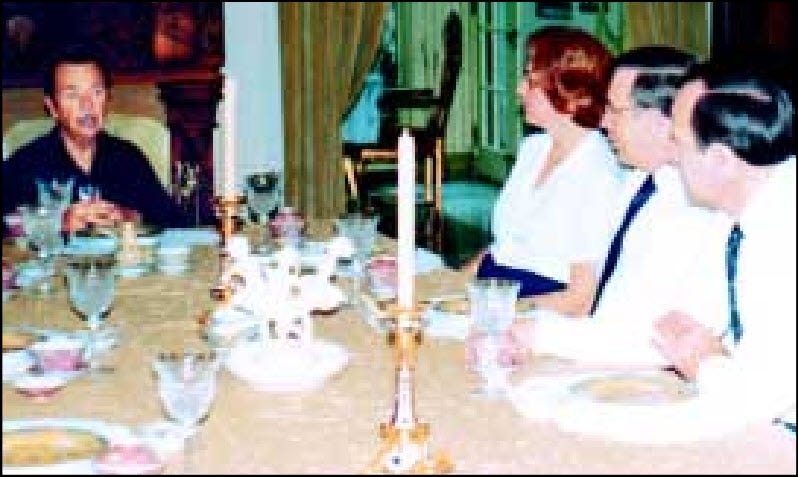
The Civil War sections of their textbooks are full of predictable Lost Cause recitations. In the books, slavery is only tertiarily connected to the war. Deification of Robert E. Lee and glowing profiles highlight other Confederate generals throughout the chapter. No profiles appear for any Union generals. The inner city black ghettos of the mid-20th century are said to have happened because “many [black] people did not take care of the property they were given by the government because they did not have to work for it. This lack of homeowner’s pride led to vandalized and neglected housing.”17 There is no mention of white flight suburbanization, highways ripping through black neighborhoods, or redlining, save to mention that the Fair Housing Act of 1968 was useless. Their 4th-grade American history textbook mentions Clarence Thomas, but not Thurgood Marshall. There is also the bemoaning of critics of Joseph McCarthy; chalking up the bad parts of McCarthyism as a “sometimes careless handling of the facts.”18 You know, lying. In retrospect, their view of McCarthy is reflective of their own view of how the truth works.
The events and systems that bring about unrest are presented as a status quo with no responsible parties. Children learning from these textbooks will not grasp the reality of the American caste system from this deceitful narrative. Police brutality, lynchings, Massive Resistance, discriminatory employment, barring from public services; none of these are mentioned. The demonstrations against the systems of oppression are denounced with little word given to the conditions that brought about those demonstrations. It is the same racist framing opponents of Civil Rights used in the 1960s because they are the very same people.
It’s not that this curriculum’s birth and growth paralleled the modern Republican party coming into shape. It was constructed and formed by the same people. Abeka’s 12th-grade economics textbook was written by Russel Kirk, an architect of modern American conservatism.
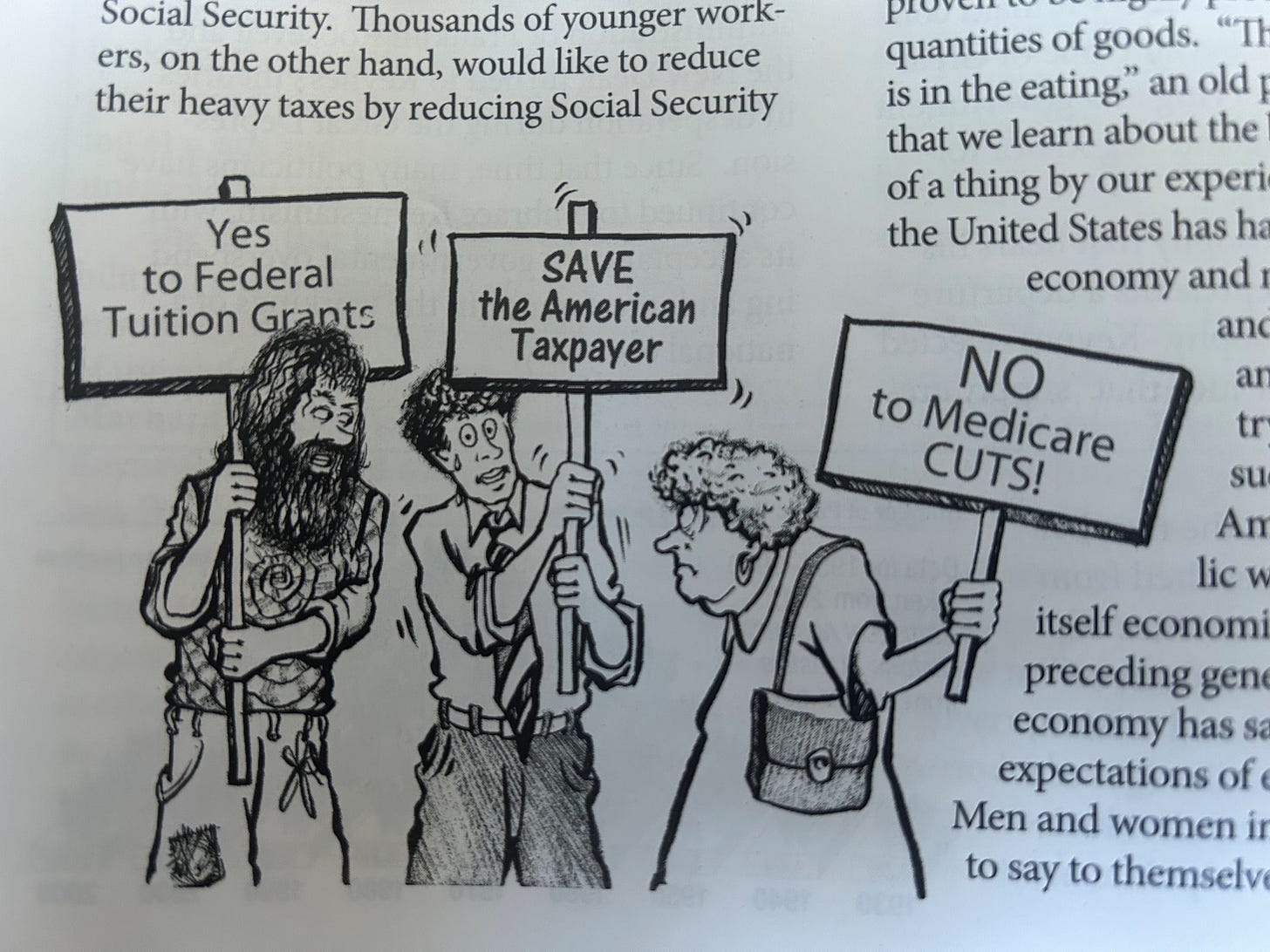
A few chapters later when explaining the reason for the start of publishing textbooks in-house, Rand says the following.
Secular textbooks were becoming less usable in traditional Christian School as textbook publishers were replacing some of the old standbys with more progressive and decidedly more secular books. Principals starting new schools wanted advice about where to turn for textbooks—a difficult request to answer since the Hortons and [Pensacola Christian] classroom teachers were not satisfied with the newer textbooks they had to “teach around.”19
This is them just coming out and saying it: We do not like the facts of reality, so we decided to change them. The world that they want to be true, that they need to be true, does not exist. When the facts of reality became too great to “teach around”, new facts had to be created. They need undue persecution because it is proof of their righteousness. They need to distort reality because reality implicates them. The goal of Pensacola Christian is not to educate, but to preserve the idea that there is a natural and unassailable Christ-ordained hierarchy. A worldview that excuses them for their misdeeds, praises them where no praise is due, and preaches unwavering obedience to a God made in their image.
Part 3
“The reason they aren't more bothered by constantly getting things wrong, why they aren't more bothered by the extreme inconsistencies and outright contradictions. By the claims that are just materially wrong, is because it gives them power over others who are bound by something as weak and flimsy as reality … That naked hypocrisy is the point. They will effortlessly carve out an exception because it makes them exceptional. They engage in wild hypocrisy as an act of domination, adhering to something demonstrably untrue out of spite. Because they believe that power belongs to those with the greatest will to take it, and what greater sign of will than the ability to override truth. Their will is a hammer that they are using to beat reality into a shape of their choosing. A simple world where reality is exactly what it looks like through their eyes, devoid of complexity, devoid of change, where they are right, and their enemies are silent.”
-Dan Olson, “In Search of a Flat Earth”
In my opening, I highlighted Pensacola Christian opened the same year as Brown v. Board of Education, 1954. I’m sure their supporters would note that the talks to create the school occurred in at least May of 1952 before the Supreme Court even took the case on.20 I could argue that the Brown case was filed in 1951 and that whites were beginning to feel the pressure to desegregate by the end of the 1940s. I could argue that his sole goal in creating a school was to thwart the incoming efforts of integration. That may indeed be true, but I actually don’t believe it. Even after all this, I think there is something deeper at play. He doesn’t deserve it, but let’s take him at his word.
“Some churches during that time period started Christian schools because of integration; however, that was not our case.”
Accepting that position, let’s look back to a brief window of time between Christmas 1951, and May 1952. After teaching for the 1951 fall semester at a Kentucky boarding school, the pair decided the school was not for them, and debated mission work instead. Before they saw the advertisement in May 1952 for a Christian principal position in Pensacola, they were given a different opportunity. When Arlin’s parent’s church offered to sponsor them as a part of their church’s mission board, they rejected it. Below is how Rand puts it.
When Arlin wrote to his folks to tell them, they wrote back that their church would sponsor them—they would not have to raise any money or anything. This would have meant being sponsored by a Northern Baptist [now American Baptist Churches USA] church. Arlin remembered his disappointment while attending Linfield [A Northern Baptist College] to find that it really differed little from a secular college. Rather than finding themselves again in the position of being on the field and working with those with whom they did not agree, they wrote back to say that they were not interested.21
If you have a gut feeling about what “disagreements” they might have had with the Northern Baptists, you’re correct. The Northern Baptist Convention was one of the strongest majority-white churches to support the rights of African Americans. From the abolition of slavery to the Civil Rights movement, it has been one of the few white protestant voices to oppose the U.S. race-based caste system. The Convention would state “We commend the United States Supreme Court in its historic decision of 1954 outlawing segregation in public education.”22 The Hortons don’t say themselves what ideals they opposed in the Northern Baptist Convention; they are consistently vague about differences they had with other “liberal” Christians.
It becomes more obvious when in the very same chapter they lie about their desegregation story, they give an anecdote about Billy Graham. Graham brought his crusade down to Pensacola in 1967, much to the enthusiasm of most white Christian congregations in Pensacola. There was one white protestant leader who did not share in this excitement: Arlin Horton. He was invited to share in the dedication of Graham’s Pensacola Crusade, but much to the alleged shock of the other churches, he declined with a scathing letter. Arlin would go on to label Graham as working with apostates (Catholics and ecumenical Protestants) who push “liberal” teachings.23 Once again, it’s never further explained what those teachings are. Graham, while exceedingly popular then and now, is considered an extremely conservative fundamentalist and evangelical. What could Arlin have possibly opposed about this man?24 Graham was very milquetoast on Civil Rights, lacking conviction at crucial points when it would actually matter in the 1960s. However, credit where it is due, Graham began integrating his crusades in the 1950s, a real progressive act for his sect at the time.25
Remember the very first part of Rand’s opening about Pensacola Christian integrating? “[Pensacola Christian] had been incorporated as a segregated school because it was the only way a private Christian school could operate in the South in the 1950s.” It’s so tiring how they constantly paint themselves as held hostage by decisions they chose to make. They could have taken the Northern Baptist missionary position. They could have gone somewhere else besides the Deep South and opened a school that was integrated. They could have worked with black leaders to integrate their school before they were forced to. They could have forced the vote with the board and resigned if they did not agree. But they didn’t.
It’s exhausting. They spend the whole book talking about standing by convictions and how they are the embodiment of integrity. What type of convictions did they hold? In 1958, they threatened the board they would resign if the votes didn’t go their way on a crucial issue. Rand explains:
It became apparent that there was a change in the junior-high students, particularly in their attitudes and behavior. One of the children said that a parent of a seventh-grade student had invited all the students in his class to their home for a party. One of the main activities was dancing. Back in the Kentucky mission school, Arlin and Beka had seen the fruits of such activities in the lives of the young people. At the time, Arlin had promised God that if he were ever given a position of school leadership, he would do his best to have a God-honoring school.
When this event happened, Arlin was aware of a standard of conduct used at Wheaton Christian Academy, and its pattern was used when he sought the approval of the school board for instituting a standard of conduct for Pensacola Christian. It was approved, not by unanimous vote, but by enough to put in place. Every seventh grader was required to sign a Standards of Conduct with each parent signing stating they would see that their child would keep it. Looking back, the Hortons see this decision as a defining and foundational moment in the school's history. It marked the day when [Pensacola Christian] chose to take the high ground on the issue of personal separation. [Pensacola Christian] would not simply be a very good private school; it, with God's help and blessing, would be a very good Christian school. They had felt so strongly about it that had the board not supported their recommendation, they would have resigned.
“We believed having those standards in place and enforced would help in setting the stage for having a greater spiritual impact with each student. We were unwilling to invest our lives in teaching children if we couldn't have a continued clean atmosphere for spiritual growth... The standards included no smoking, drinking, or dancing while enrolled whether at home or elsewhere.”26
Was it “God-honoring” to run a segregated school for 17 years and then lie about it, Arlin? Using this anecdote to showcase their convictions, and then several pages later just hand waving away that they began as a segregated school because doing otherwise “could not have been done at that time” exposes what is important to them. That Arlin stated “we were unwilling to invest our lives in teaching children if we couldn't have a continued clean atmosphere for spiritual growth” means he did not think that denying the rights of his black neighbors hindered a “clean atmosphere for spiritual growth”.
They may have made their students sign pledges to not dance, smoke, or drink, but they did not make the same conditions for their financiers. Their future friend W. Clement Stone would joke that “his longevity was a result of smoking Havana cigars, dancing and drinking champagne.”27 A perfect trifecta of the top Pensacola Christian standards. It’s very important to the Hortons that you do not think they are motivated by money; they make that point constantly throughout the book. That’s why it incenses me that at every opportunity they get to do the right thing, they do whatever is ever financially beneficial to them. If desegregating meant retaining their tax-exempt status, they would do so. And if they needed to be more flexible on their high moral standards in service of getting funding, they would do that too. They often say they made their decisions based on what God was telling them to do, and from what they’ve revealed about themselves it sounds like their God is a dollar bill.
In earlier sections of the book, Rand describes the amount of work the Hortons directly put into the school. Arlin was the acting administrator, but the book details a variety of eclectic duties he would take on personally. The Hortons lived on campus, wiring the telephone and alarm system to their house to take calls after hours. He is described as a night watchman, janitor, receptionist, transportation supervisor, and principal. This detail is more revealing than Rand intended and gives a revelation about the racist prejudice of the Hortons.
The next year [1958], the board approved purchasing three new sixty-six passenger buses which was a great relief for the students, drivers, and Arlin. With the addition of transportation came the addition of new responsibilities to his list of duties: substituting as a bus driver, hiring and supervising the drivers, seeing the children got home safely, and frequently taking the buses to local garages for needed repairs. What a burden was lifted when the Lord sent Gettys Allen in 1964 to be the transportation Supervisor.
If he held these duties before hiring someone in 1964, we can all but guarantee that these advertisements calling for white-only bus drivers and staff were written personally by Arlin himself.

They state the impossibility of running a Christian school in the Deep South with an integrated student body. Even accepting this statement at face value, it obscures an important piece. Maybe an integrated student body would have been hard to do, but there were far fewer barriers to hiring black staff. It’s why in every advertisement the school has printed, the text never indicates it was closed to black students; it didn’t have to. The discrimination was inherent. On the other hand, they could have hired black faculty, but they actively denied blacks employment. Either Arlin had personal motivations in not hiring blacks, or he measured that it would deter white families from enrolling in his school. Both options are a moral failing by Arlin, and his refusal to acknowledge that is damning.
Whenever they speak about their early years as a segregated school, they paint themselves with no agency as if segregation was something being done to them. It was not being done to them; it was being done by them. Just as earlier with the alleged first black mother who tried to enroll their child at Pensacola Christian, Rand frames the story as “they left without enrolling”. She places the action firmly on the black family. It was not that they left without enrolling, Arlin denied them entry based on their race. At every turn, they chose segregation. They were proliferators and profiteers of it. They had repeated opportunities to practice their faith in a way that would not perpetuate the degradation and disenfranchisement of black Americans, and they chose not to until they were monetarily forced.
All of these revelations bring into question what they mean when they speak of certainty and absolutes. Again from Builders,
A biblical worldview teaches that there are absolutes and objective truth. There are character traits, actions, ideas which are good and bad. There are eternal verities. There is right and wrong. The opposite, though often subtly presented is that nothing is always true or always false. Truths change, values change, teaching methods change. The child must build new “truths” through experience and group judgment.28
Tell me, Rand. Between 1968 and 1971, did truths and values change? When a black mother came into Arlin’s office and troubled his conscious, was it only then your school’s practices became wrong? If a society built on the supremacy of one class over another is wrong, is it an “eternal verity”, or was it fine at the time? Either your school was born in sin and you refuse to acknowledge it, or you do believe God ordains one group superior over another. You claim to operate from a place of objective truth, yet you move the truth around based on your whims.
This absolutist worldview is so cheap. I think a surface-level analysis would just call this a result of being religious, but there is no faith or humility here. How can you be a person of faith when your worldview and moral framework are certain at every point? It’s not faith, it is the opposite.
To reactionaries like Arlin and Rand, the things that benefit them and harm others will always be considered an unassailable fact of life; something natural and God-ordained. Just the way it is. The things that benefit others and harm them, conversely, will be considered an alteration of God’s will, and therefore manufactured and demonic. Their peer, Jerry Falwell, would preach against integration in 1958. In his sermon, he would state the equal value in God’s eye of “negro souls” and white souls. He would condemn violence towards blacks and state he had “no animosity in my heart” towards any race. Yet his sermon was in unequivocal support of the segregation of races and of their intrinsic inequality. Why? Because it was commanded by God. Falwell would state “If we persist in tearing down God’s barriers, God must punish us for it.” and “If Chief Justice Warren and his associates had known God’s Word and had desired to the Lord’s will, I am confident that the 1954 decision would never have been made.”29
I think it’s clear by now that they never had any opposition to American apartheid. It’s advantageous for them to pretend like they did in retrospect, but it is in truth a recurring feature of their beliefs and values. I think Arlin is speaking honestly when he says they did not open a school just to avoid desegregation; I think he did it to amass power and enforce a hierarchy he believes God has placed him atop. He can claim that power was for God, but it was just for the idea of what God is in his head: himself. As it became disadvantageous to support white supremacy, a new supremacy had to become the face of the caste system. One based on a vague gesture to morality that is unexamined yet absolute. One that could be bent and shaped by their will, and could be fluid enough to change when politically expedient to do so.
Pensacola Christian’s worldview is inseparable from the same motivations that guide white supremacy; the end of the world that they are working toward will end with a culling of humanity. With God coming down from heaven, separating the “wheat from the chaff”. One group to elevate to his side, and another to be subjugated and dominated. The color and shape of this supremacy may change, but the core ideology will not. By amassing this empire, they can create the heaven they are seeking on earth: “A simple world where reality is exactly what it looks like through their eyes, devoid of complexity, devoid of change, where they are right, and their enemies are silent.” ∎
If you are a Pensacola Christian affiliate or supporter and have read this in its entirety, thank you for allowing yourself the opportunity to challenge the beliefs you have likely had your entire life. Please use this in reflection of other things you may have been taught by this school and ministry.
Please consider donating to The African American Heritage Society of Pensacola and the Coalition for Responsible Home Education
The PCC website claimed “nearly 5,000” students as of this posting and PCA claims 2,200 as of 2020. Abeka claims to reach 1 million students a year through distribution to private schools and another 250,000 through distribution to homeschoolers
Revenue information provided by ProPublica: Abeka, PCC PCA, and Chris Tex Inc. This does not include revenue from Campus Church, summer camps, or other unknown affiliate 501(c)3s.
In the Supreme Court, Green v. County School Board of New Kent County in 1968 and Alexander v. Holmes County Board of Education in 1969 would play large roles in the meaningful integration of public schools. Prior to these rulings, Brown II made the mistake of using the language “all deliberate speed” in terms of integrating. Southern schools used this vague timeline to their advantage, and it allowed them the room to implement Massive Resistance strategies. Before these rulings integration was painfully slow in most southern schools.
In the District Court, Augustus v. Board of Public Instruction would be decided in 1962. However, it would continue to bounce around the courts for nearly two decades from its first filing with a variety of outcomes. Eventual Supreme Court justice Thurgood Marshall represented Augustus for a portion of the time. The Augustus case is more thoroughly discussed in J. Michael Butler’s book: Beyond Integration, also referenced in various other locations throughout this post.
Phyllis Rand, Builders of the Dream, About The Author, Page 352
ibid Chapter 7, Pages 93 - 96
Jack Bass and W. Scott Poole, The Palmetto State: The Making of South Carolina, Chapter 7
J. Michael Butler, Beyond Integration, Chapter 1, Page 42 - 43
Builders of the Dream, Chapter 4, Page 43
Michael Sean Winters, God’s Right Hand, Chapter 6, Page 106
Builders of the Dream, Notes, Page 338
Builders of the Dream, Chapter 11, Pages 155 - 160
United States History in Christian Perspective: Heritage of Freedom. Page 630
ibid. Page 594
Builders of the Dream, Chapter 11, Page 157
Builders of the Dream, Chapter 4, Pages 42 - 43
Builders of the Dream, Chapter 7, Pages 90 - 92
I feel they need to state it was not that they supported abortion; Graham and Catholics were overwhelmingly opposed to abortion. Opposing the “murder of babies” is often used to justify any other act done by those in the Evangelical community, but they can’t pull that card here. It’s hard to think about now, but in reality, evangelicals would not rally to the cause of pro-life until the mid-1970s.
Builders of the Dream, Chapter 6, Pages 73 - 74
Builders of the Dream, Chapter 11, Page 157
God’s Right Hand, Chapter 3, Pages 55 - 56




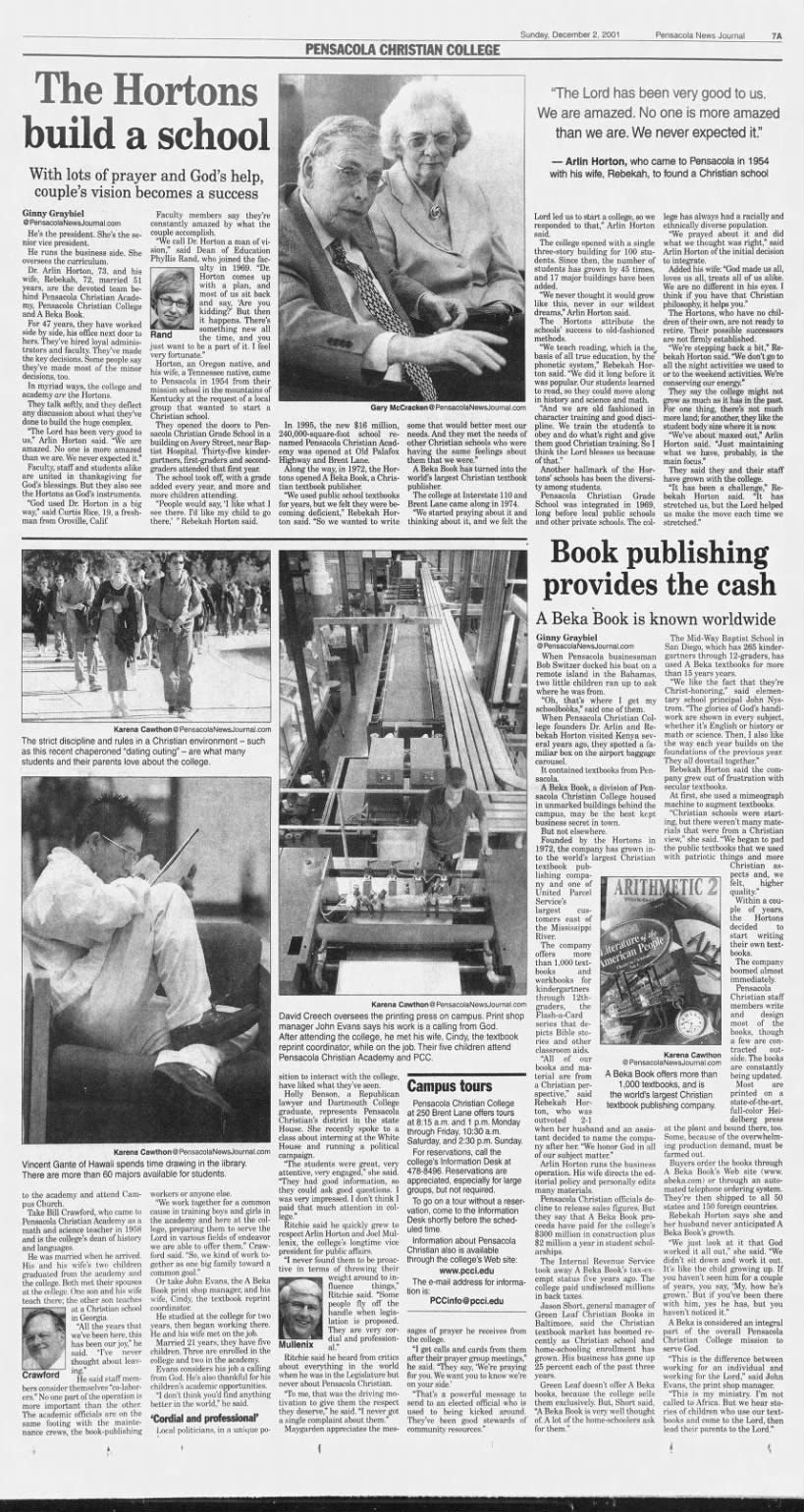
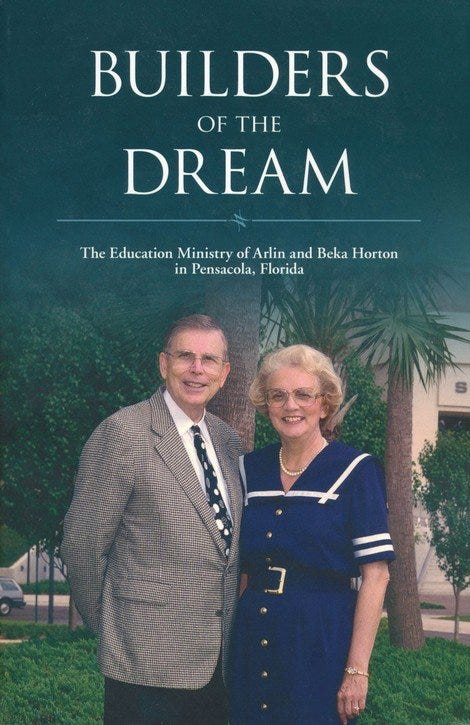
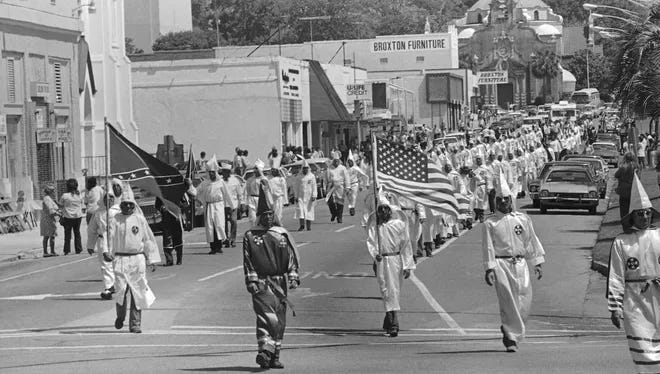
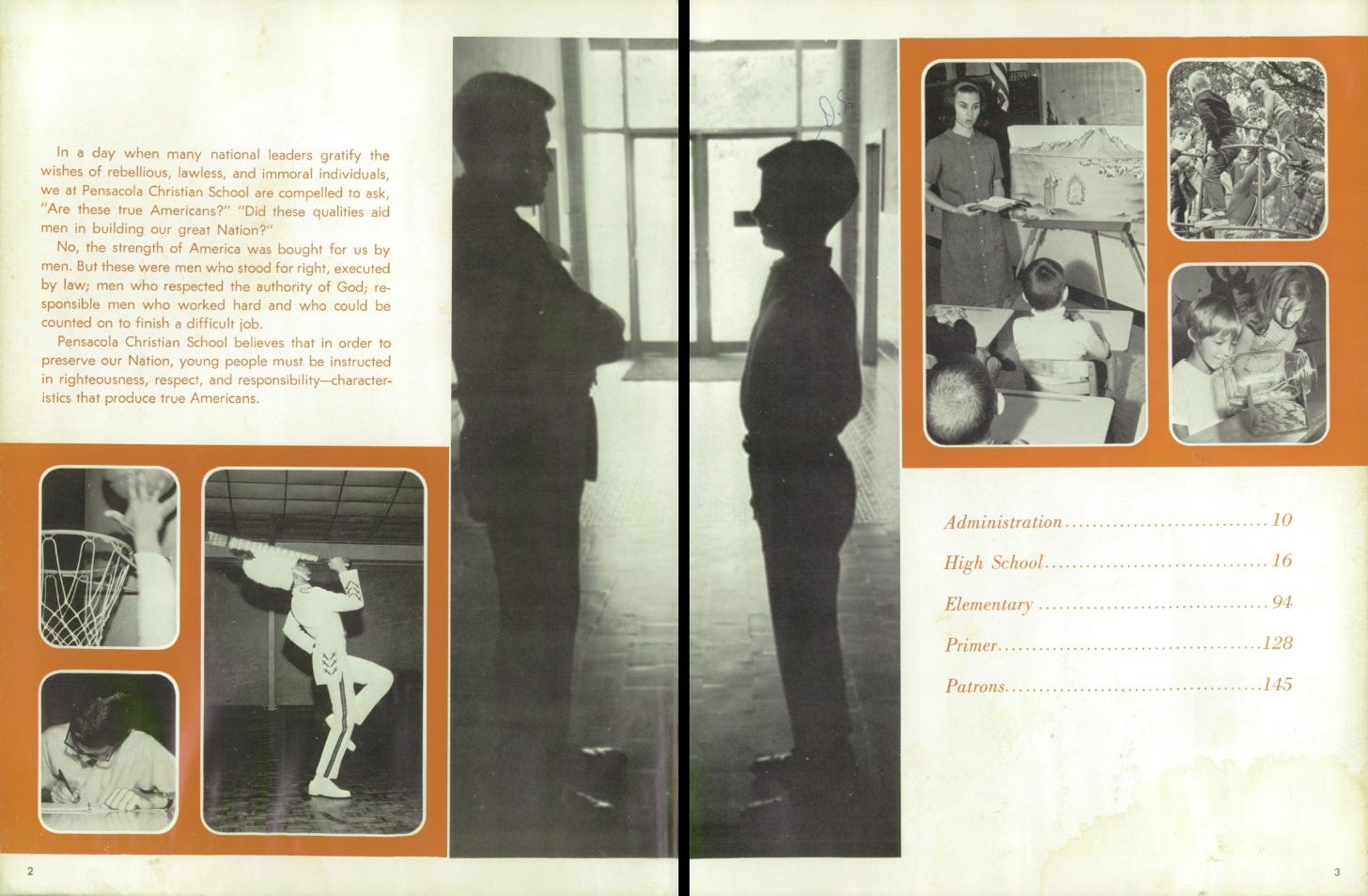
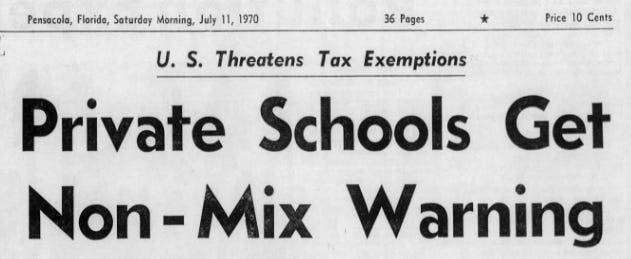
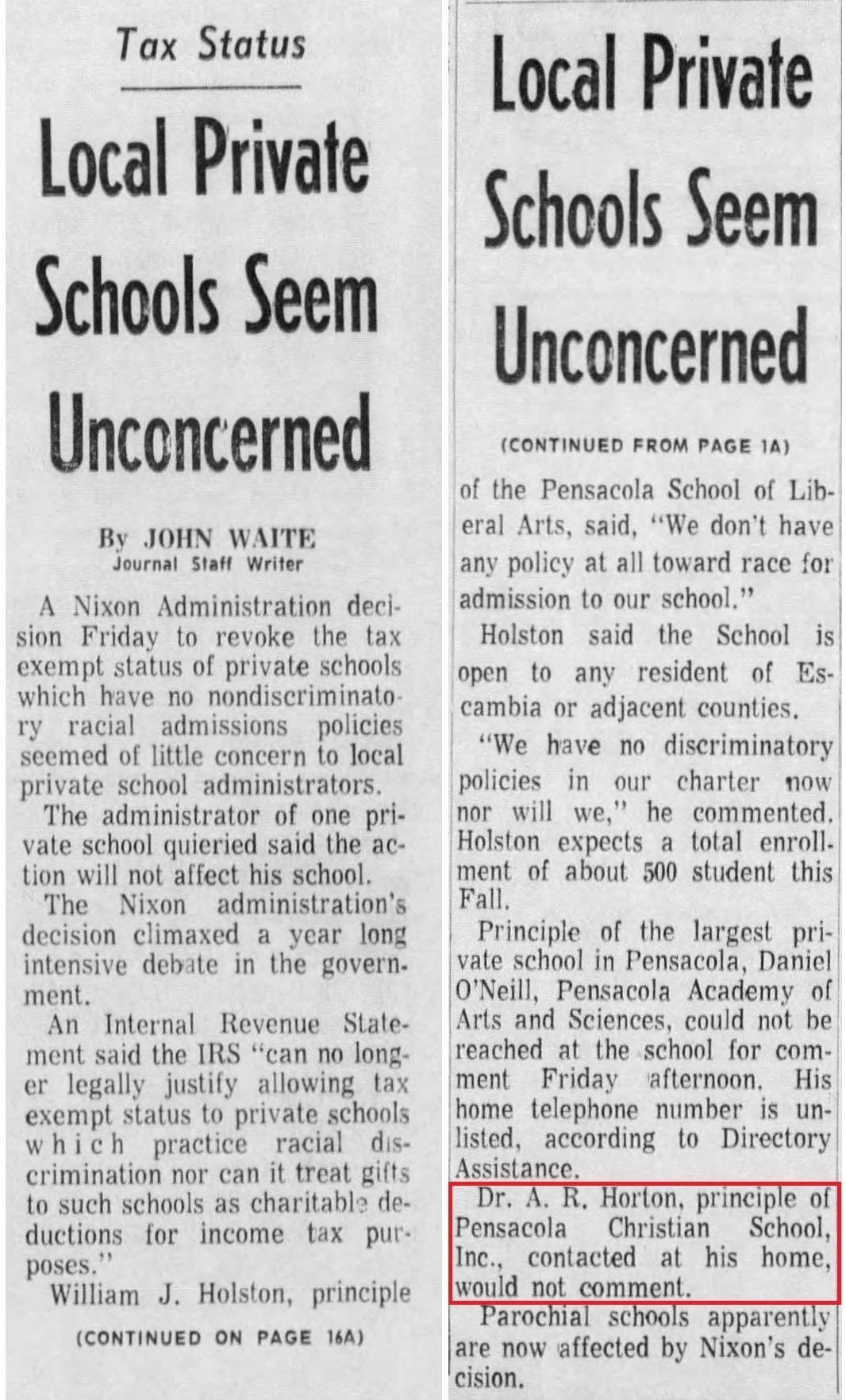
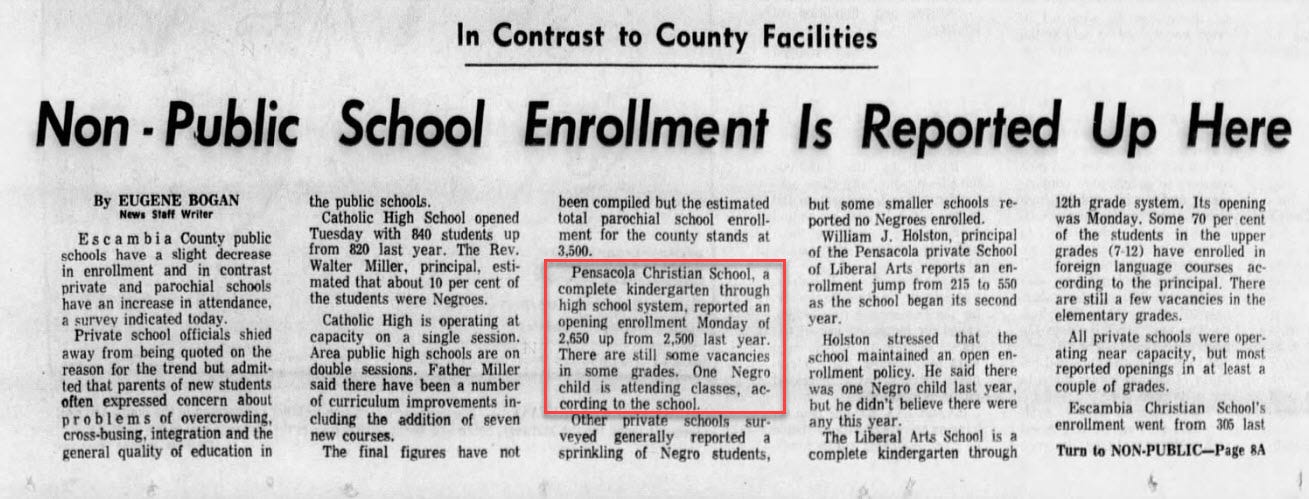
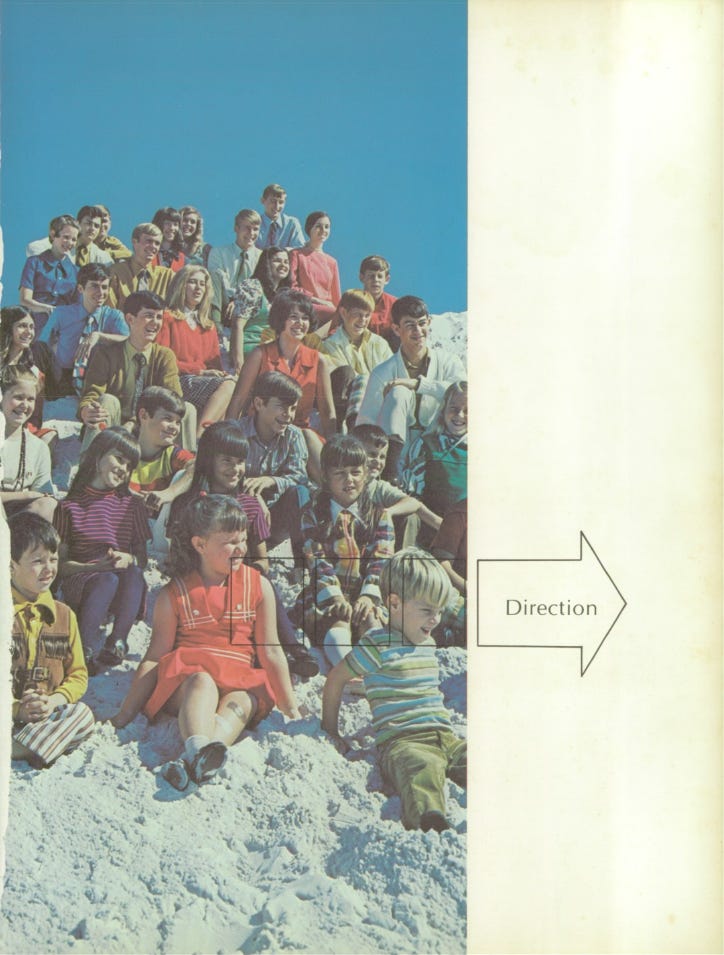
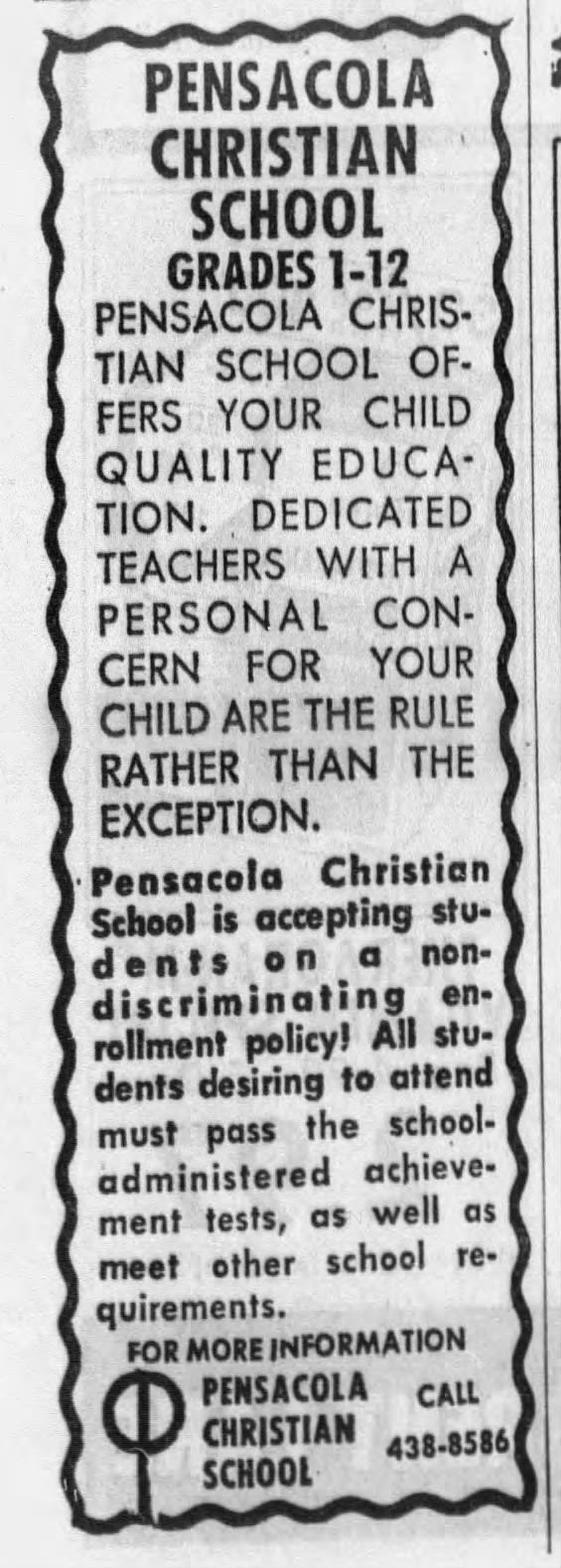

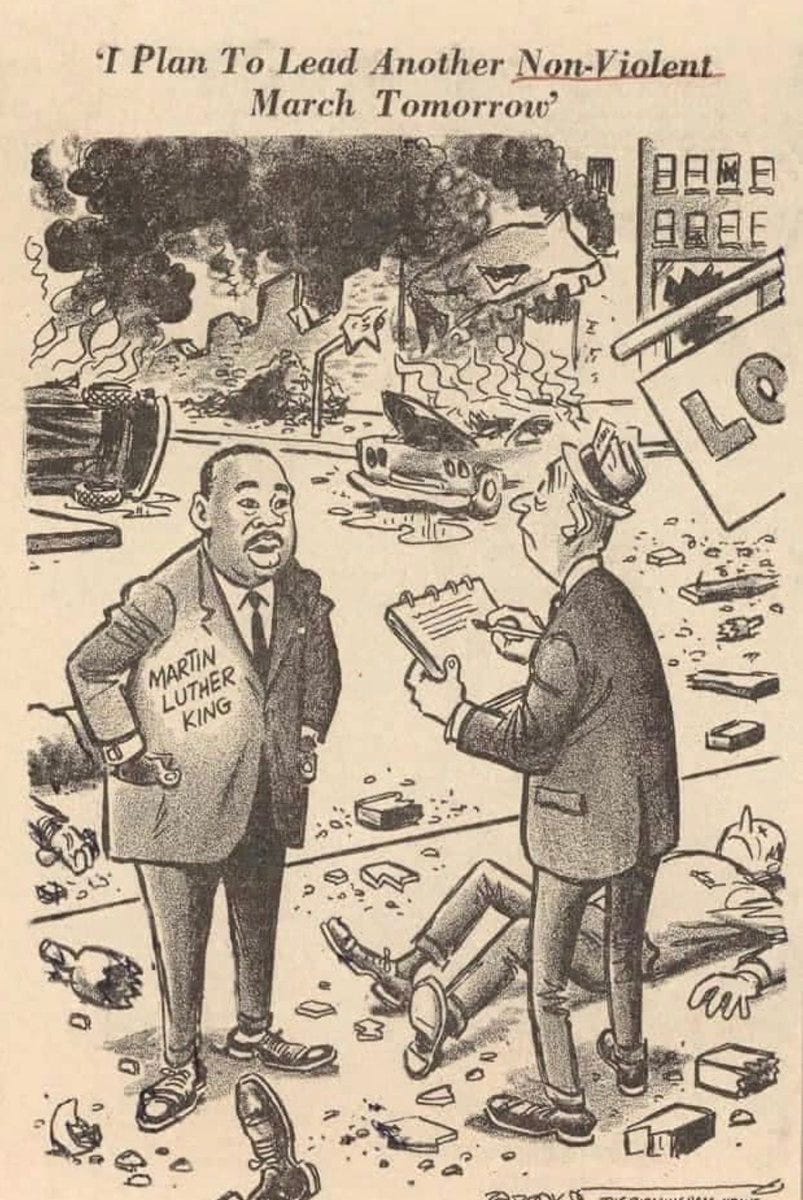
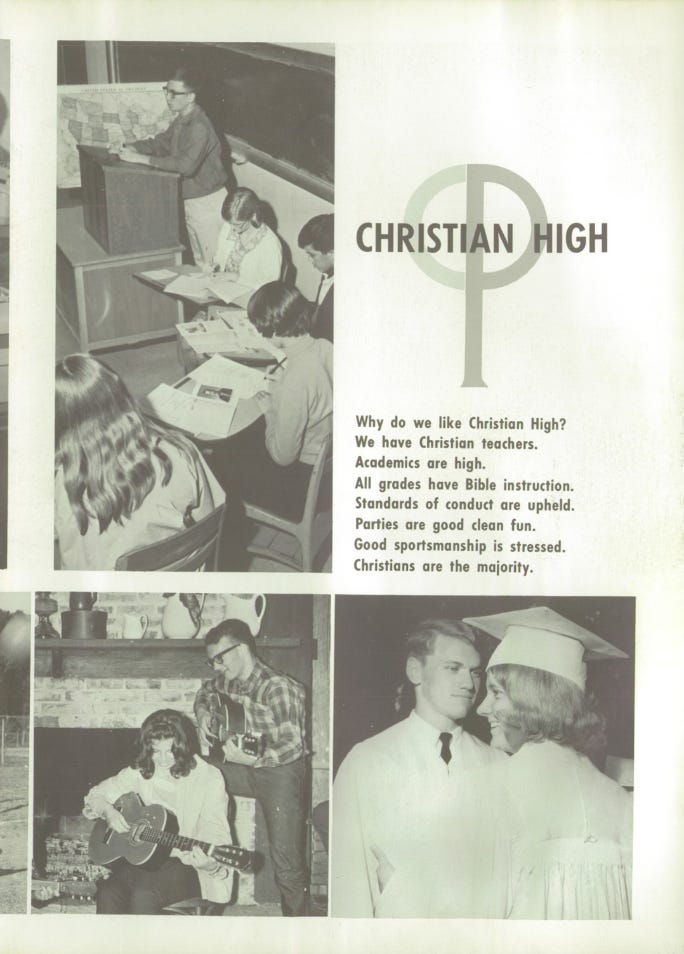



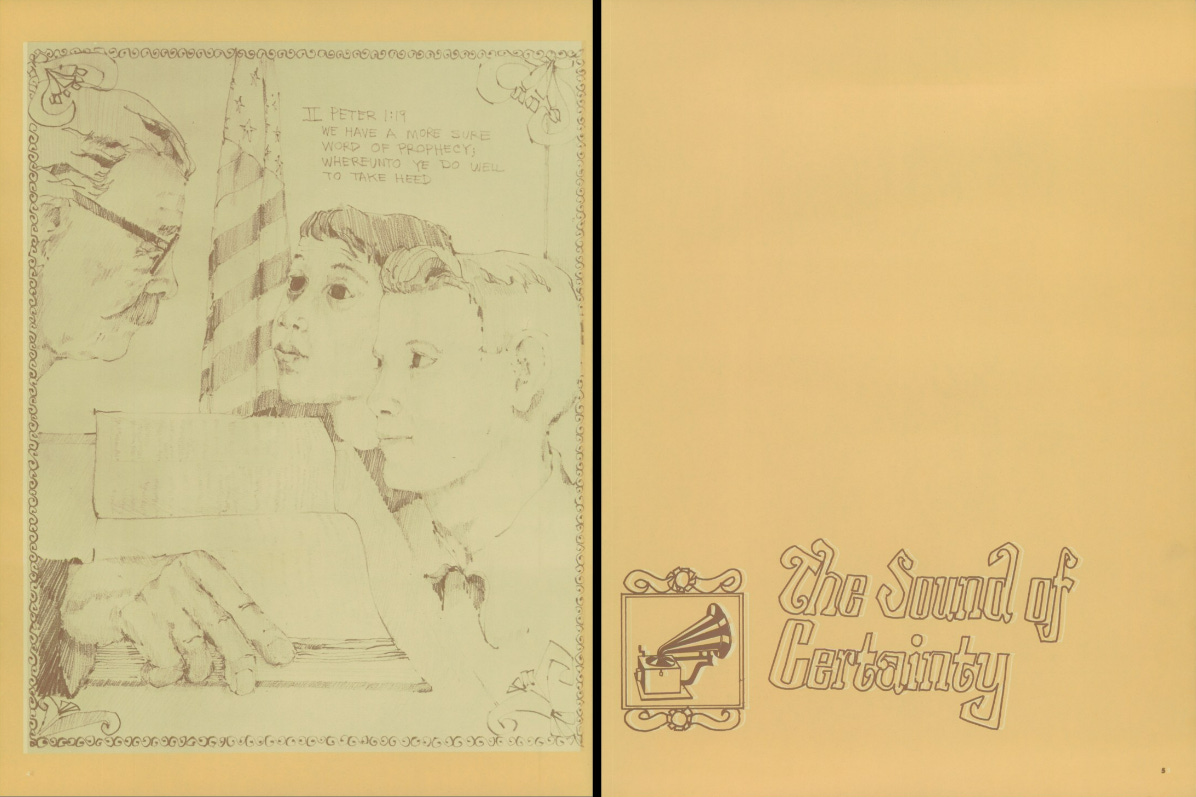
Amazingly well researched and well written article. Crazy to me that this really isn't that long ago, but yet, we are seeing a surge of reality-denial these days too so I guess nothing should surprise me. Thank you for sharing.
This is my new "Roman Empire " 😂 I grew up in Maine. I went to a private christian school until I was homeschooled with this curriculum going into grade 5 and later ACE curriculum 🤦♀️. As a person of color just now learning the truths about the civil rights movement and the real History of the Country it has been heart wrenching knowing that so much of that truth was not only hidden from me through this curriculum, but done so in the name of God in order to seal it as divine truth and unquestionable. It is shameful and scary how easy it is to spin things to fit an agenda. Thank you for the research and time put into this information and for giving all the references! Reading this was validating and healing for me!